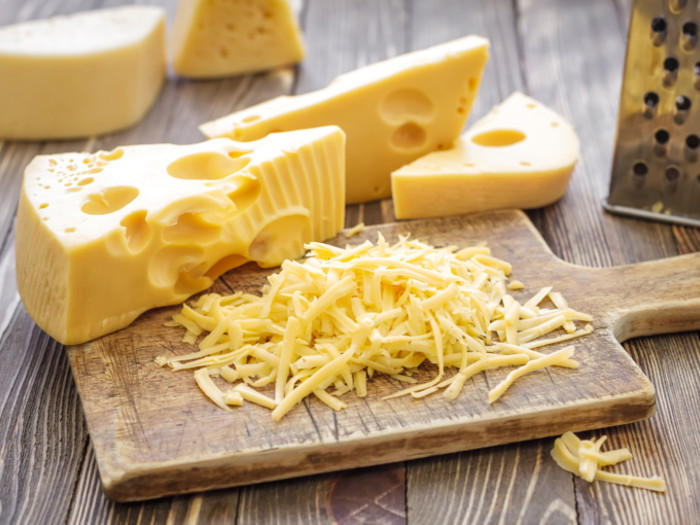10 Best American Goat Cheeses

1 ) Vermont Creamery Bonne Bouche
Bonne Bouche is an acclaimed aged goat cheese produced by Vermont Creamery in Websterville, Vermont, USA. This cheese is known for its distinctive ash-ripened rind that develops a creamy and robust flavor as it ages. Initially aged for 10 days, Bonne Bouche can continue to mature for up to 90 days, becoming softer and more piquant over time.
It’s made from pasteurized goat’s milk sourced from small family farms, both local and Canadian, and is celebrated for its wrinkly, geotrichum-rind, giving it a unique texture and appearance.

Bijou is a type of aged goat cheese produced by Vermont Creamery, known for its artisanal dairy products. Bijou, meaning “jewel” in French, reflects the small, precious nature of this cheese. It is characterized by its delicate, wrinkled rind and creamy, dense interior that becomes more complex in flavor as it ages.
Typically, Bijou has a mildly tangy, slightly sweet taste with earthy undertones, making it a versatile option for cheese boards, salads, or cooking. The cheese is hand-rolled and aged to ensure consistency and quality, showcasing the creamery’s dedication to traditional cheese-making techniques.

Vermont Goats’ Milk Feta, made by Vermont Butter & Cheese Creamery, is a type of feta cheese crafted primarily from fresh, high-quality goats’ milk. This cheese is known for its creamy yet crumbly texture and its tangy, slightly salty flavor profile, which makes it versatile for various culinary applications such as salads, sandwiches, and Mediterranean dishes.
This artisan cheese is produced in small batches, ensuring close attention to detail and quality.

Fig & Honey Goat Cheese
Fig & Honey Goat Cheese made by LaClare Creamery is a type of cheese that combines the savory flavors of goat cheese with the sweet and fruity notes of figs and honey. This artisanal cheese offers a creamy texture and a delightful balance of tanginess from the goat cheese and sweetness from the added ingredients.
Crafted by LaClare Creamery, a well-known producer of premium goat cheeses, the Fig & Honey Goat Cheese is often enjoyed on its own, paired with crackers, or used in various culinary dishes to enhance flavors.

5 ) Pennyroyal Farm
Boonter’s Blue

6 ) Vermont Creamery
Classic Goat Cheese Crumbles
Classic Goat Cheese Crumbles by Vermont Creamery are well-known for their creamy texture and distinct tangy flavor. This product is made from high-quality goat’s milk, which is sourced from local farms in Vermont. The crumbles are often used in a variety of dishes such as salads, pizzas, and pasta due to their ability to add a rich, savory element.
The cheese undergoes precise aging processes to bring out its characteristic flavor profile.

7 ) LaClare Creamery
Chipotle Honey Goat Cheese
LaClare Creamery produces a unique cheese known as Chipotle Honey Goat Cheese. This cheese combines the creamy, tangy flavor of goat cheese with a sweet and slightly spicy kick from honey and chipotle peppers. The result is a balanced blend of sweet, spicy, and tangy flavors that can enhance a variety of dishes.
This product is ideal for spreading on crackers, incorporating into recipes, or simply enjoying on its own.

8 ) Vermont Creamery
Clover Blossom Honey Goat Cheese Log
The Clover Blossom Honey Goat Cheese Log is a product crafted by Vermont Creamery. Vermont Creamery, known for their artisanal dairy products, specializes in high-quality cheeses. This particular cheese log combines the creamy texture of goat cheese with the natural sweetness of clover blossom honey, offering a unique flavor profile.
The cheese is typically available in a log shape, which makes it easy to slice and serve.

9 ) BelGioioso Cheese
Romano
BelGioioso Cheese produces a variety of Italian cheeses, one of which is their Romano cheese. This variety of Romano, crafted by BelGioioso, is known for its firm texture and sharp, tangy flavor that distinguishes it as a classic choice for grating over pasta dishes, soups, and salads.
Made using traditional Italian cheese-making techniques, BelGioioso’s Romano is typically aged for several months, which enhances its rich flavor and granular texture. This cheese is often appreciated for its versatility in cooking and can add depth to many Italian recipes.

10) Vermont Creamery
Classic Spreadable Goat Cheese
Classic Spreadable Goat Cheese by Vermont Creamery is a fresh goat cheese known for its creamy texture and tangy flavor. This product is crafted using traditional French cheese-making techniques, ensuring a high-quality and smooth consistency that is easily spreadable.
Typically, it is made from pasteurized goat’s milk and contains no artificial preservatives, making it a healthier option compared to some other spreadable cheeses. It is versatile in culinary applications, suitable for spreading on bread, incorporating into recipes, or enhancing the flavor of various dishes.









